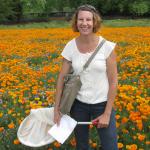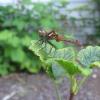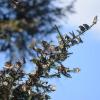Select updates from our team of restoration ecologists, entomologists, plant ecologists, and researchers.
The Xerces Society manages the largest pollinator conservation program in the world. We work with people from all walks of life to create habitat for bees, butterflies, and other beneficial insects—and hundreds of thousands of acres of flower-rich habitat have been planted. We also offer certifications: Bee Better Certified for farmers and food companies who are committed to supporting pollinator conservation in agricultural lands, and Bee City USA and Bee Campus USA for cities and colleges dedicated to making their community safer for pollinators.
With staff based in more than a dozen states, and offering a diverse array of expertise, it can be challenging to summarize the impactful work being done. We compile updates from pollinator team members into regular digests. This edition focuses on work done across the country to support monarch butterflies and other pollinators. Jessa Kay Cruz describes how Xerces supports groups in California undertaking habitat creation projects, and Jennifer Hopwood presents a series of fact sheets about milkweeds, part of a nationwide project to provide information to roadside managers.
Supporting Community Habitat Projects in California
Jessa Kay Cruz
The western monarch population has declined more than 99% since the 1980s, plummeting in the last couple of years to just a few thousand butterflies. One critical and immediate step we can take is to get high-quality habitat onto the ground—and although creating habitat has always been a pillar of Xerces’ work, we realize that the pace and scale of this work needs to increase if we are to save western monarchs. To this end, early in 2019, we embarked on an ambitious project to donate “habitat kits”, each consisting of hundreds of regionally appropriate, native, and climate-smart plant materials, to private landowners, agencies, and other partners with shovel-ready projects in California. We were also able to provide technical assistance to the kit recipients, to ensure successful establishment.
Our habitat kit project has been a tremendous success and over the course of the past two years we have funded 60 different projects in 28 different counties throughout the state—a total of over 51,000 plants. Once planting of this year’s kits is complete, we estimate that this project will have created the equivalent of over 15 miles of permanent, protected habitat for monarchs and other pollinators.
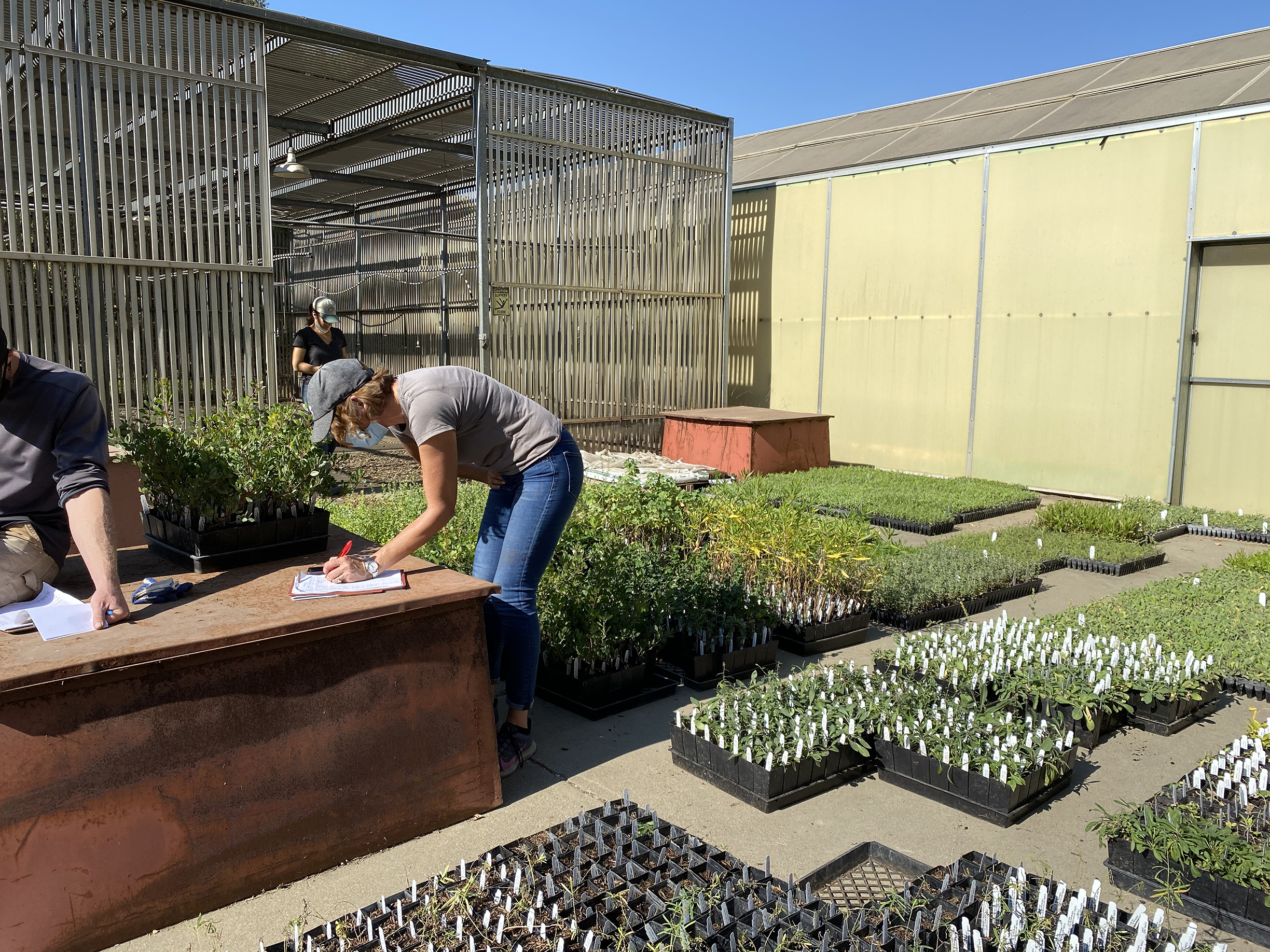
The author preparing to distribute habitat kits. Tens of thousands of native plants, including milkweed, were received by conservation partners for use in habitat projects. (Photo: Xerces Society / Angela Laws.)
The kits have been used in a diversity of different landscapes for a wide range of projects. For example, at San Joaquin Delta College, a public community college in Stockton, students and staff worked with Xerces conservationists to plant a pollinator garden in front of the college’s horticultural facility. The students and staff will maintain the garden as it matures. Interpretive signage and horticulture class tours will educate students and faculty alike on the importance of pollinator conservation.
Another kit recipient included a large collaboration of people and projects in her monarch kit application. Melinda Barrett of the Mariposa County Resource Conservation District used her kits at nine different sites, including county parks and the riparian areas of Mariposa Creek Parkway as part of a countywide Pollinator Parks project. Plans are underway for Mariposa County RCD and local Master Gardeners to use these habitat areas to provide on-going public education. Through Melinda, kits were also donated to Toyyun Koca, a 200-acre private ranch dedicated to creating monarch habitat in the Sierra Foothills, and to Waylon Coats, a member of the Southern Sierra Miwuk Nation Tribal Council to use in tribal areas along Bear Creek in Midpines. More information on these projects can be found on the blog of Heather Bernikoff.
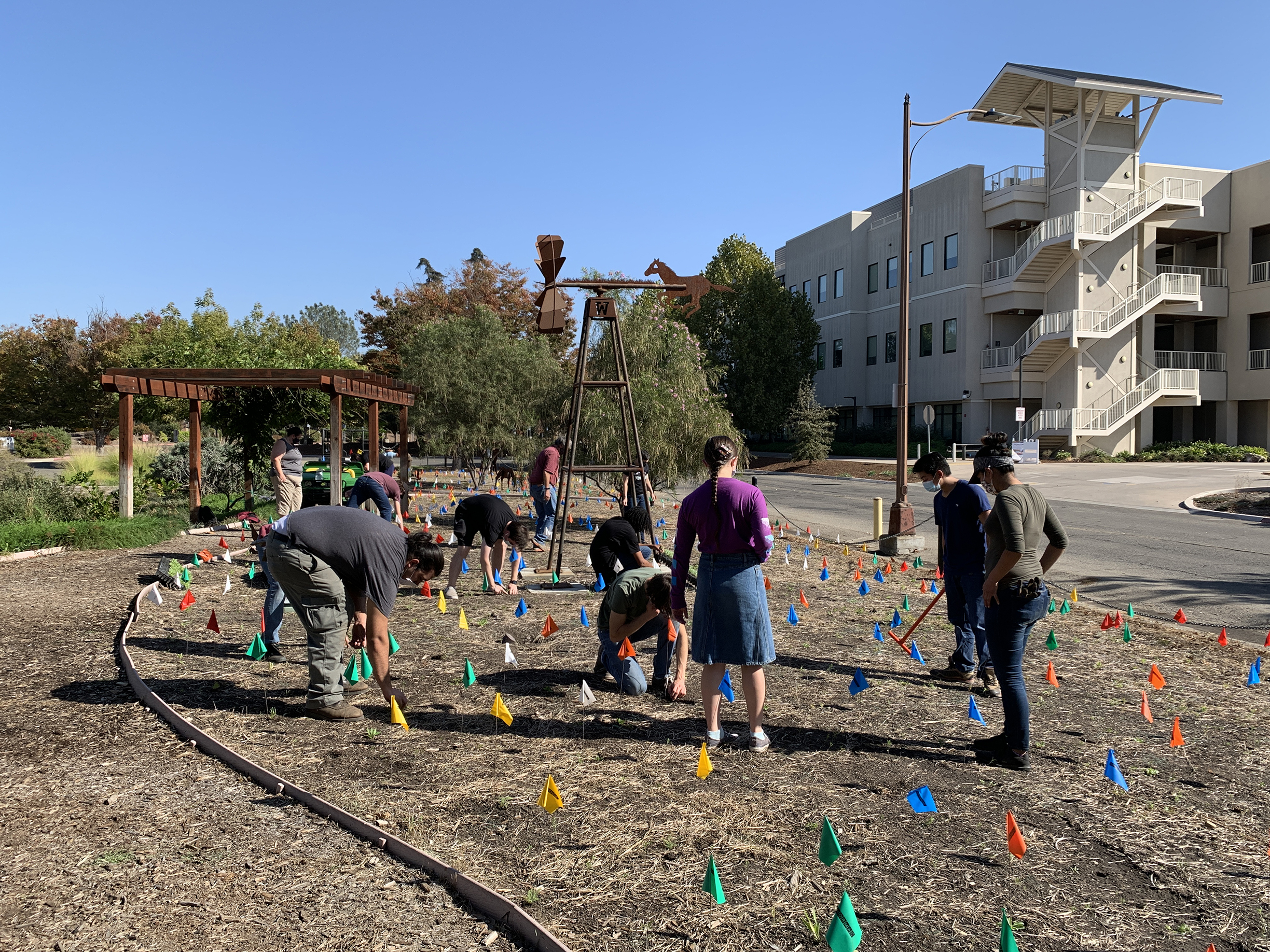
The habitat kit received by San Joaquin Delta College was used to create a monarch and pollinator garden in the heart of the campus. Students and college staff joined together to plant it. (Photo: Xerces Society / DeeDee Soto.)
New Regional Milkweed Guides
Jennifer Hopwood
Milkweeds (Asclepias spp.) are herbaceous perennial plants named for their milky sap. They occur in a wide range of habitats, including natural plant communities and highly disturbed areas. Milkweeds are a rich source of nectar that support many different insects, but they are probably best known as required host plants for caterpillars of the monarch butterfly (Danaus plexippus). They play an essential role in the butterfly’s life cycle, and with monarchs in decline, maintaining existing stands of milkweed and adding milkweed back into landscapes is critically important.
A diversity of milkweed species can be found growing on roadsides across the United States. Milkweeds that are less tolerant to disturbance can occur within intact high-quality plant communities on roadsides, including remnant grasslands, savannas, chaparral, and woodlands. Several species can also colonize roadsides that have been highly disturbed, for example, by construction or intensive management. Roadside vegetation management can influence milkweed survival, and by recognizing where milkweeds grow, vegetation managers can adjust strategies to accommodate milkweeds and monarchs.
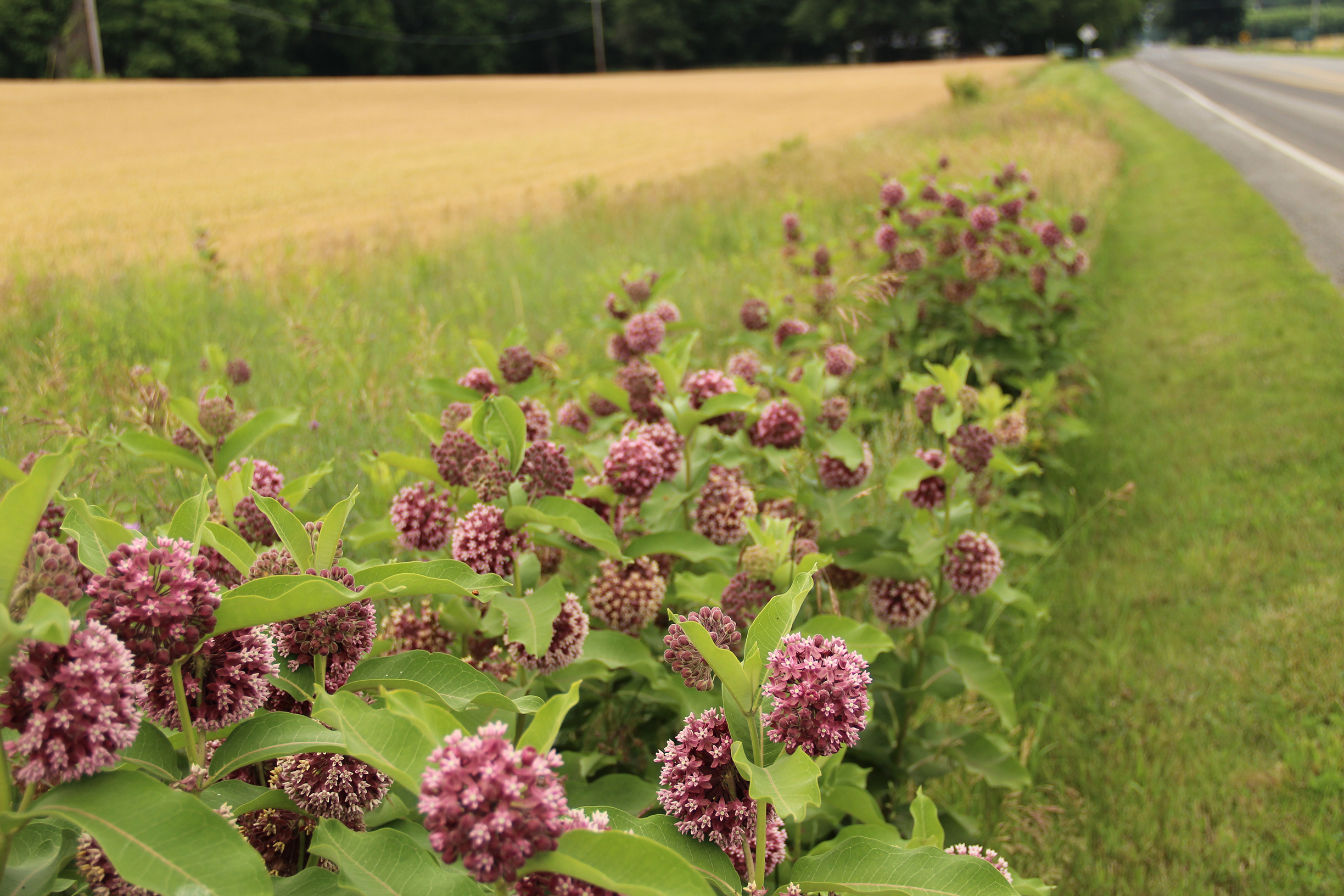
Milkweeds grow on roadsides in many regions of the United States, where they add beauty to the landscape and offer a rich source of nectar to many insects. (Photo: Xerces Society / Jennifer Hopwood.)
Milkweed on roadsides is readily used by adult monarchs that seek out milkweed stems and leaves to lay their eggs on and nectar on milkweed flowers. Monarch caterpillars eat the leaves of many different species of milkweeds, and are documented using roadsides for reproduction in the Midwest, Southern Plains, West, and other regions. Roadsides can also provide diverse nectar sources which fuel monarch flight, breeding, migration, and overwintering.
There are over seventy species of milkweeds native to the United States, but none of them occur in every state. To help roadside managers and others recognize native milkweeds in their regions, we have developed milkweed recognition guides for sixteen regions of the Lower 48 states in collaboration with Monarch Joint Venture (MJV). These 2-page fact sheets highlight the most common species on roadsides within each region and include photos of key features as well as notes about habitat, soil types, and county-level distributions.
Xerces also has produced Milkweeds: A Conservation Practitioner’s Guide, which offers comprehensive guidance on using and growing milkweeds and goes into much greater detail than the information in these fact sheets.
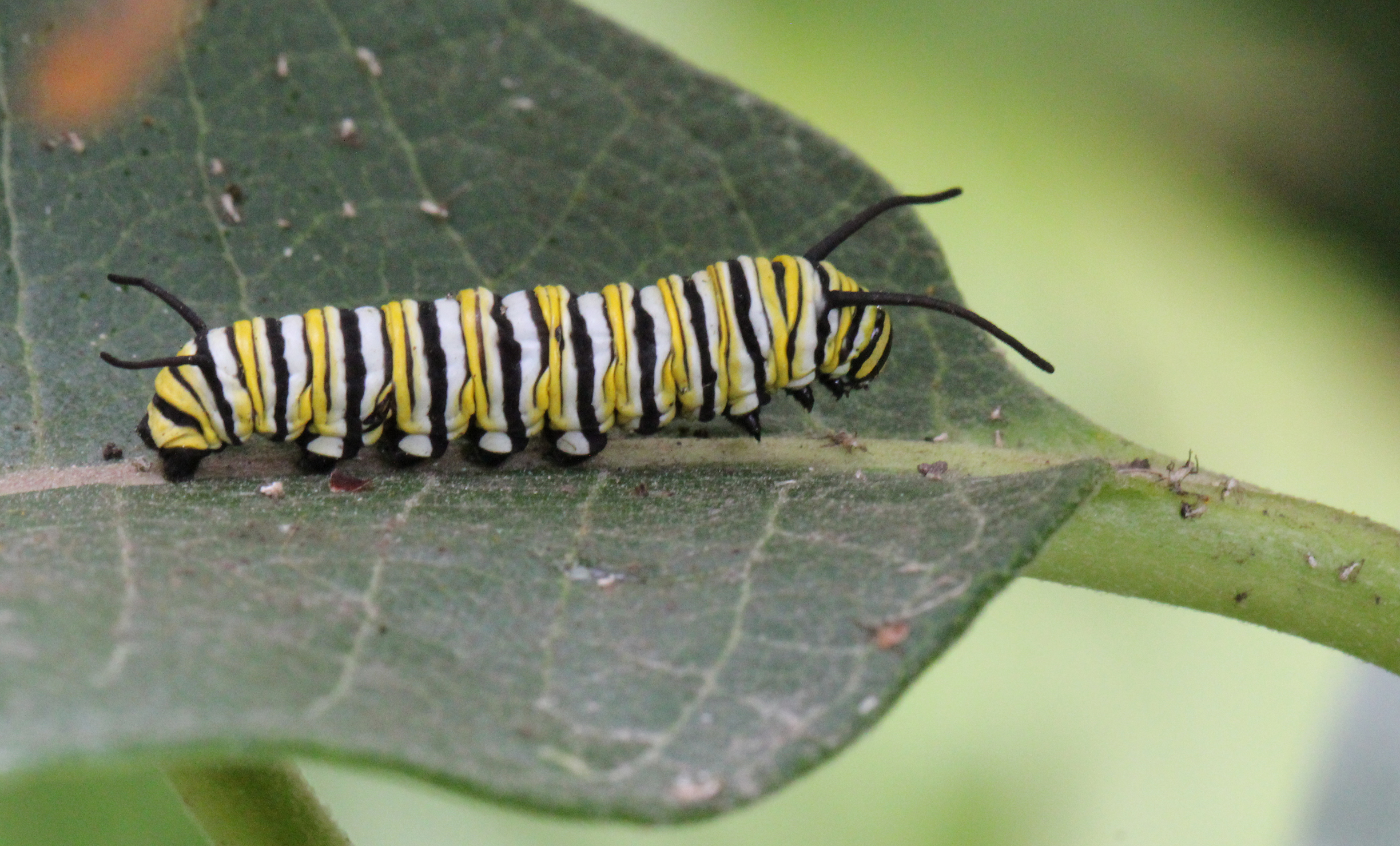
As host plants for monarch caterpillars, milkweeds are an essential part of the butterfly’s life cycle. Roadsides provide a place where milkweeds may thrive. (Photo: Xerces Society / Jennifer Hopwood.)
The work to create the milkweed fact sheets was conducted in the National Cooperative Highway Research Program, which is administered by the Transportation Research Board of the National Academies of Sciences, Engineering, and Medicine.
Further Reading
Learn more about the Xerces Society’s Pollinator Conservation Program.
Discover what we are doing to protect monarchs.
Read all of our pollinator team program digests!
Find out how you can help Bring Back the Pollinators.


